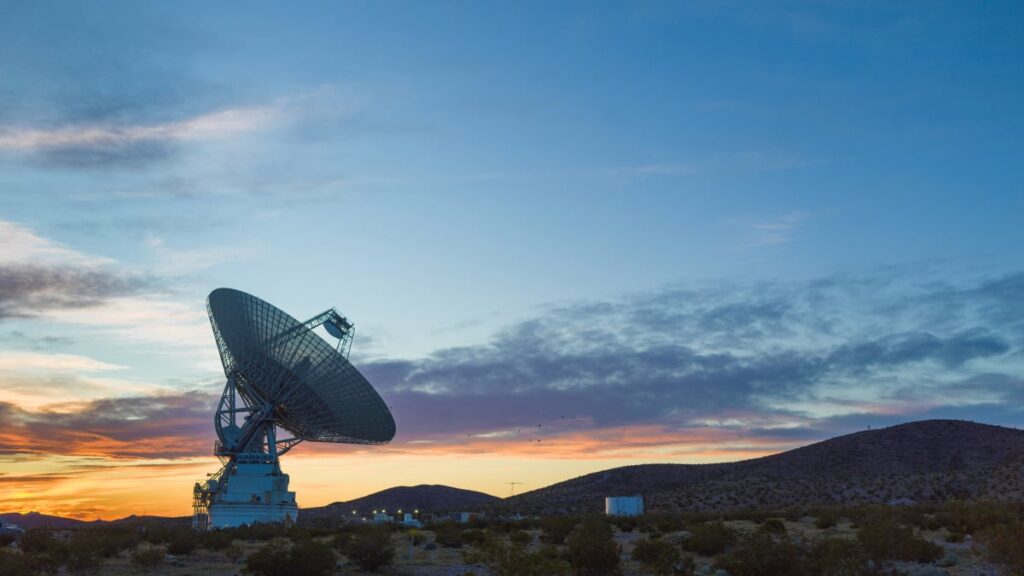
Equipment failures in NASA’s Deep Space Network have disrupted spacecraft communications and stalled near-Earth asteroid studies for nearly two months. The situation has been exacerbated by the ongoing federal government shutdown, which has delayed repair efforts. Engineers are racing to restore the space agency’s historic 230-foot-wide radio dish located near Barstow, California. This massive dish, comparable in size to a Boeing 747 jet, broke down on September 16.
Known since 1966 as the Mars Antenna, this giant dish was instrumental in receiving the first signals from a spacecraft closely observing the Red Planet. During operations, it over-rotated, straining cables and pipes at its center. Additionally, damaged hoses from the fire suppression system caused flooding, although NASA quickly mitigated the water damage. A formal mishap investigation board has been established to determine the cause of the antenna’s damage.
Impact on Space Missions
The breakdown of the Mars Antenna has significant implications for NASA’s ongoing and future missions. The repair timeline remains unclear, raising concerns about its impact on preparations for Artemis II, a 10-day crewed mission that will orbit the moon as early as next year. Its predecessor, Artemis I, required over 900 hours of Deep Space Network support in 2022 and briefly lost contact during flight, highlighting the system’s fragility.
“The antenna remains offline as the board members, engineers, and technicians evaluate the structure and make recommendations and repairs,” said Ian O’Neill, a NASA Jet Propulsion Laboratory spokesperson. “There is no danger to the public.”
The Role of the Deep Space Network
Founded in 1963, NASA’s Deep Space Network is the world’s largest and most powerful system for communicating with spacecraft. It commands and monitors more than 40 missions, with more on the way. The network’s three antenna complexes — in California, Spain, and Australia — work around the clock so that at least one site can always reach spacecraft as Earth turns.
“Without the DSN, we would never have been able to undertake voyages to Mercury and Venus, visit asteroids and comets,” said Al Bhanji, a former manager of the network. “We’d never have seen the stunning images of robots on Mars, or close-up views of the majestic rings of Saturn.”
The network is currently overburdened, with data flow exceeding its original capacity by 40 percent. The NASA inspector general has urged upgrades to the aging infrastructure. Under the Deep Space Network Aperture Enhancement Program, NASA is adding six new dishes, including a 112-foot-wide antenna in California slated to go online in 2026.
Scientific and Safety Implications
The damaged Mars Antenna is the largest dish at the Goldstone Complex in California, capable of tracking spacecraft traveling tens of billions of miles from Earth. It was expanded to its current size in 1988 to support the Voyager 2 mission, which has since exited the solar system, along with Voyager 1.
As the world’s most sensitive planetary radar, the dish is used to “ping” near-Earth asteroids, allowing scientists to determine an asteroid’s position and speed. This capability is crucial for tracking asteroids that could potentially impact Earth. Although most asteroids are studied with optical telescopes, radar images provide detailed information about their physical properties, such as shape and size.
Since the collapse of the Arecibo Observatory in Puerto Rico in 2020, the Mars Antenna has detected over 200 near-Earth asteroids. At the end of last year, more than half were classified as “potentially hazardous.”
All scheduled asteroid observations have been canceled at least through the end of this year, creating a gap in monitoring potentially dangerous space objects. “NASA will provide information on the board’s findings and next steps to the antenna’s service after the federal government reopens,” a spokesperson stated.
Historical Resilience and Future Challenges
Failures in the network of this kind are rare, but the legendary antenna in the Mojave Desert has survived setbacks in the past. In 2014, a welder accidentally dropped a handrail during maintenance, puncturing a hole in the dish. In 1992, a magnitude-7.4 earthquake also damaged the antenna, necessitating repairs.
As NASA works to resolve the current crisis, the situation underscores the need for continued investment in the Deep Space Network’s infrastructure. The agency’s efforts to enhance the network’s capabilities are crucial for maintaining its role as a cornerstone of space exploration and planetary defense.







